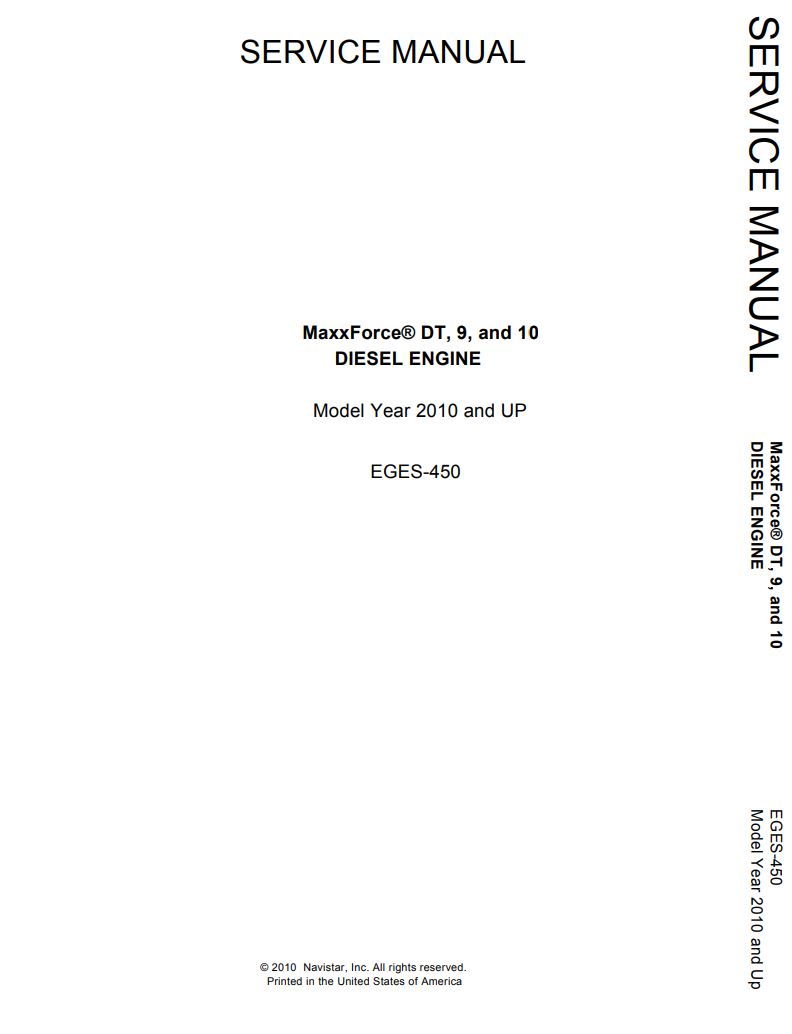The MaxxForce DT9 and DT10 are a family of diesel engines manufactured by Navistar International Corporation (formerly known as International Truck and Engine Corporation). These engines were developed for use in medium and heavy-duty trucks, buses, and other commercial vehicles. The MaxxForce DT9 and DT10 engines were part of Navistar’s MaxxForce series of engines, which were designed to meet emissions regulations while providing reliable performance and fuel efficiency. Below are some key features and characteristics of the MaxxForce DT9 and DT10 diesel engines:
1. Displacement and Configuration:
The MaxxForce DT9 and DT10 engines are inline six-cylinder diesel engines. The DT9 engine has a displacement of approximately 9.3 liters (570 cubic inches), while the DT10 engine has a slightly larger displacement, around 10.8 liters (659 cubic inches). This larger displacement of the DT10 provides it with more power and torque compared to the DT9.
2. Emission Technology:
Both engines were designed to meet emissions standards such as EPA 2007 and EPA 2010 regulations. To achieve compliance, Navistar utilized exhaust gas recirculation (EGR) technology combined with a diesel particulate filter (DPF) and selective catalytic reduction (SCR) to reduce harmful emissions.
3. Power and Performance:
The MaxxForce DT9 and DT10 engines were known for their robust power and performance. The DT9 engine typically offered horsepower ratings ranging from approximately 245 to 330 horsepower, while the DT10 engine offered a higher range of horsepower, from around 330 to 475 horsepower. Torque figures varied accordingly.
4. Application:
These engines were primarily used in medium and heavy-duty trucks, buses, and vocational vehicles, especially those manufactured by International Truck, which is a division of Navistar.
5. Aftertreatment System:
The aftertreatment system used in these engines, including the combination of EGR, DPF, and SCR technologies, helped reduce nitrogen oxide (NOx) and particulate matter (PM) emissions to comply with the stringent emissions standards.
6. Maintenance and Service:
Navistar focused on providing ease of maintenance and serviceability for these engines. Regular maintenance procedures were straightforward, with accessible service points and components, ensuring minimal downtime for commercial operators.
7. Transition and Replacement:
In 2010, Navistar introduced the MaxxForce 11 and MaxxForce 13 engines, which were larger displacement engines designed to meet more stringent emissions regulations. These newer engines gradually replaced the MaxxForce DT9 and DT10 engines, and by 2015, Navistar discontinued the MaxxForce engine line altogether.
While the MaxxForce DT9 and DT10 engines provided solid performance and reliability, they were phased out due to challenges with meeting emissions standards without using selective catalytic reduction (SCR) technology. The transition to newer engine designs allowed Navistar to comply with more recent and stringent emissions regulations while continuing to offer powerful and efficient diesel engines for their commercial vehicle lineup.





There are no reviews yet.